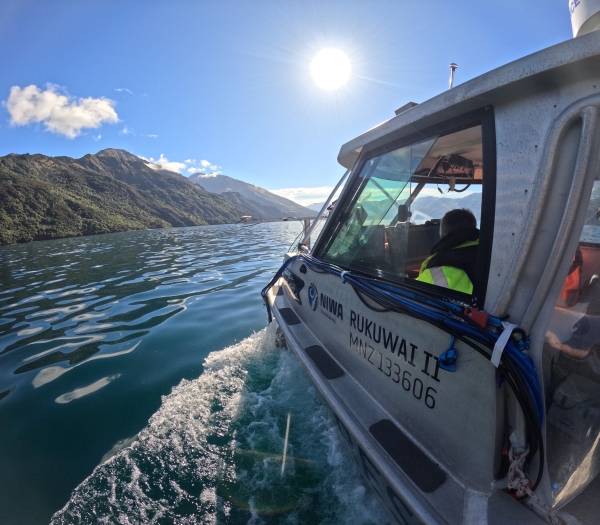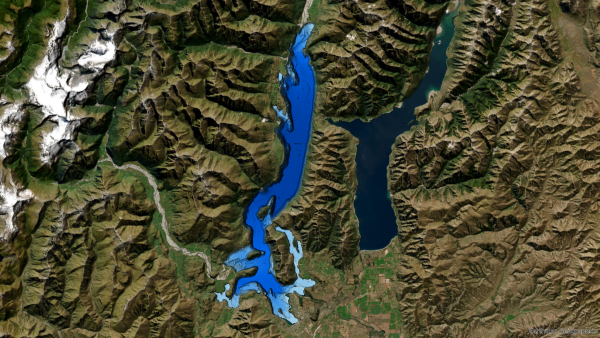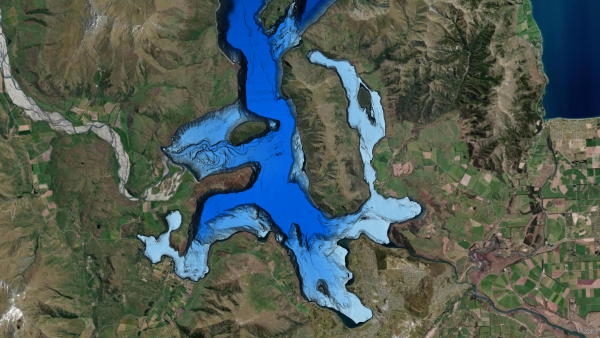NIWA scientists have mapped the whole of Lake Wānaka in incredible detail.
They have done the work to better understand its underwater structure and potential for earthquakes and tsunamis, after an active fault was discovered there three years ago.
NIWA marine geology technician Sam Davidson said they can now visualise the entire lakebed and its structures.
“Lake Wānaka is one of the most photographed locations in the country but until now its depths have remained a mystery. We discovered some really interesting features, including complex channel systems from the rivers that feed into it.
“We also saw dramatic steep slopes that plummet to the deepest parts of the lake. Wānaka sits in a U-shaped valley which was carved by an ancient glacier during the last ice age over 10,000 years ago; these features and the lake’s geological history came to life in front of our eyes,” said Sam.
Sam and his team retrofitted a multibeam echosounder onto a small dive vessel, which they steered up and down the lake over several weeks.
It calculated the water depth by bouncing soundwaves off the lakebed at a rate of 10 per second and timing how long they took to return. From this data, NIWA have built a full 3D model of the entire area.
NIWA hydrodynamics scientist Dr David Plew is using the map to study the lake’s water quality.
“New Zealand has experienced dramatic changes in land use over the past century, which has had big impacts on our freshwater systems. Nutrient loads, the volume of water, and the amount of sediment going into Lake Wānaka have all been impacted. And climate change is also affecting our lakes and will do so even more in the future,” said Dr Plew.
To predict how Lake Wānaka will change, NIWA are developing computer models of the catchment and lake. These need accurate bathymetry data, and up until now NIWA have been working from charts created in the 1970’s.
“This new depth data that we've captured is more accurate and detailed. This is especially important in shallow parts of the lake like Roys Bay and Stevensons Inlet, but also where rivers flow into the lake, because these areas have seen some of the biggest impacts and changes since the 1970’s,” said Dr Plew.
NIWA’s work will also be used to study hazards from future seismic activity.
Lake Wānaka is at risk of experiencing a tsunami-like event due to its location on an active fault and its specific geological features, such as those steep slopes that could create a landslide and pose a risk to lakefront communities.
“Now we have a clear picture of the lake’s structure, we can better inform hazard modellers and councils to better prepare for these events,” said Sam.
Otago Regional Council’s Manager Natural Hazards, Dr Jean-Luc Payan, says:
“The new data is invaluable to inform natural hazards investigations and to understand the consequences of natural hazards events on people and infrastructure in the Lake Wanaka area”.





